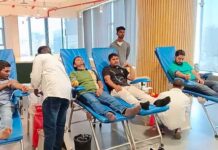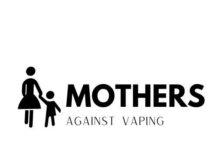New Delhi, November 18, 2018: It is estimated that approximately 40-50000 new cases of cancer occur in under-14 year of age in India. Many of these are not diagnosed, either because they have poor access to health care, or because primary health care workers do not recognise signs and symptoms of pediatric malignancy, said Dr. Gauri Kapoor, a leading pediatric oncologist & Director Pediatric Hematology & Oncology, Rajiv Gandhi Cancer Institute & Research Centre (RGCIRC), Rohini, Delhi. September is Childhood Cancer Awareness Month and RGCIRC has been raising awareness on early diagnosis of childhood cancer during the month.
Advances in survival of children with cancer over the past 30 years have been remarkable. Today approximately 70% of childhood cancers are potentially curable. Interestingly, this is not because of discovery of new drugs in treatment of childhood cancer, rather it been achieved by the rational combination of the three important therapeutic modalities – chemotherapy, surgery and radiotherapy. This has been achieved through successive clinical trials comparing the best known therapy with new innovations in treatment.
In India health care facilities are very diverse, ranging from centres having all state-of-the-art facilities and trained medical personnel to centres which do not have even basic infrastructure for diagnosis and treatment of childhood cancer. Like in any other developing country, late presentation, delays in diagnosis and tardy referral to appropriate treatment centres probably lower the cure rate. There is no doubt that the best chance for cure is the first chance; an unnecessary delay, misdiagnosis, incomplete surgery, or inadequate chemotherapy may adversely affect prognosis, irrespective of subsequent care, emphasized Dr. Kapoor who is also Medical Director RGCIRC, Nitibagh, New Delhi.
The average general practitioner or pediatrician will rarely see a child with cancer. This lack of familiarity with the signs and symptoms of pediatric malignancy makes it easy to understand why the diagnosis may be delayed or missed.
Except for haematological cancers and brain tumors, the principal cancers that affect children are seldom seen in adults. In children deep-seated sarcomas and embryonal tumors are the rule. Many of the well-known classic warning signs of adult cancer apply to carcinomas that are extremely rare in children. Pediatric tumors do not involve epithelial tissues so they do not bleed externally or exfoliate epithelial cells; as such screening techniques useful in adults, such as stool blood tests or Pap smears, have no counterparts in children. However, there are warning signs and symptoms that should alert the health worker to a possible diagnosis of cancer in children.
To create a greater awareness of these signs RGCIRC has recommended the following information sheet. RGCIRC aims to disseminate this widely to primary health care personnel. “We trust that this will assist health workers to consider the diagnosis of cancer where appropriate and to refer these patients to a children’s cancer unit as a matter of urgency,” added Dr. Kapoor.
Warning Signs of Cancer in Children
Cancer in children is fairly rare, but is often curable. It is important to make an early diagnosis. For this a high index of suspicion is necessary. The commonest types of cancer in childhood are leukemia, lymphomas and tumors in the brain or abdomen.
Following features need to be noticed for suspecting cancer in children:
1. Pallor plus bleeding (such as purpura, unexplained bruises or persistent oozing from mouth or nose).
2. Bone pain
- Not localised to specific area and that often wakes the child at night
- A child who develops a limp, or a toddler who becomes reluctant to bear weight, or who stops walking
- Always investigate backache in a child
3. Localised lymphadenopathy, when persistent and unexplained
- Beware of axillary / inguinal / cervical glands that are > 2 cm in diameter, discrete and non-tender, and do not get smaller after 2 weeks’ treatment with antibiotics.
- ‘Tuberculous‘ nodes not responding to treatment within 6 weeks
- Glands in the supraclavicular area
4. Unexplained neurological signs
- Headaches lasting longer than 2 weeks
- Early morning vomiting
- Ataxia (walks unsteadily)
- Cranial nerve palsy
5. An unexplained mass
- Important sites are the abdomen, testes, head and neck and limbs
6. Persistent unexplained fever, apathy or weight loss
- No obvious focus and not responding to antibiotics
7. Eye changes
- White reflex
- Recent onset of squint
- Proptosis
- Loss of vision
Newsvoir





















